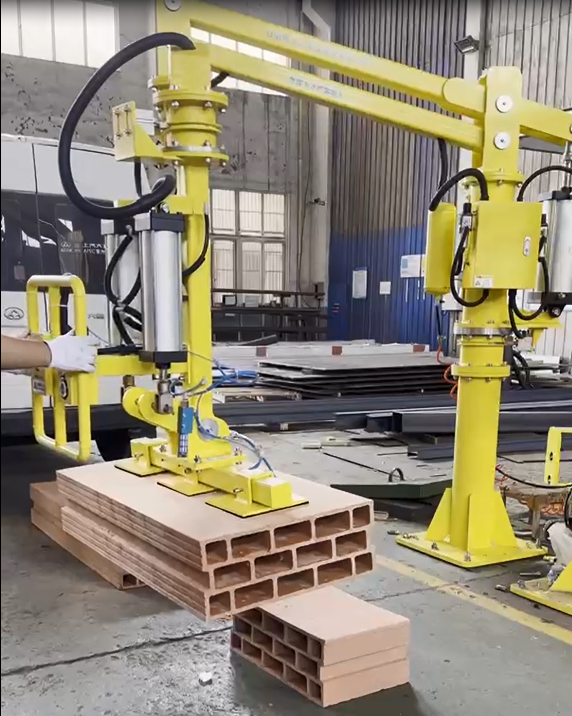Robotic gripping of bricks is a common task in industrial automation, especially in the construction industry, logistics industry and other fields. In order to achieve efficient and stable gripping, the following aspects need to be considered comprehensively:
1. Gripper design
Claw gripper: This is the most common type of gripper, which clamps bricks by closing two or more claws. The material of the claw should have sufficient strength and wear resistance, and the size and weight of the brick should be considered to design the appropriate jaw opening size and clamping force.
Vacuum suction cup gripper: Suitable for bricks with smooth surfaces, and grasping is achieved through vacuum adsorption. The suction cup material should have good sealing and wear resistance, and the appropriate number of suction cups and vacuum degree should be selected according to the size and weight of the brick.
Magnetic gripper: Suitable for bricks made of magnetic materials, and grasping is achieved through magnetic adsorption. The magnetic force of the magnetic gripper should be adjusted according to the weight of the brick.
2. Robot selection
Load capacity: The load capacity of the robot should be greater than the weight of the brick, and a certain safety factor should be considered.
Working range: The working range of the manipulator should cover the brick picking and placing positions.
Accuracy: Select the appropriate accuracy level according to the job requirements to ensure accurate grasping.
Speed: Select the appropriate speed according to the production rhythm.
3. Control system
Trajectory planning: Plan the movement trajectory of the manipulator according to the stacking method and grasping position of the bricks.
Force feedback control: During the grasping process, the grasping force is monitored in real time through the force sensor to avoid damaging the bricks.
Vision system: The visual system can be used to locate the bricks to improve the accuracy of grasping.
4. Other considerations
Brick characteristics: Consider the size, weight, material, surface condition and other factors of the bricks, and select the appropriate gripper and control parameters.
Environmental factors: Consider the temperature, humidity, dust and other factors of the working environment, and select the appropriate manipulator and protective measures.
Safety: Design reasonable protective measures to prevent accidents during the operation of the manipulator.
Post time: Oct-14-2024


